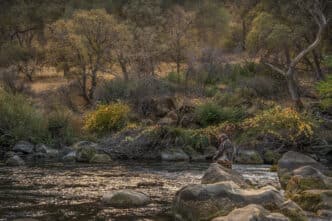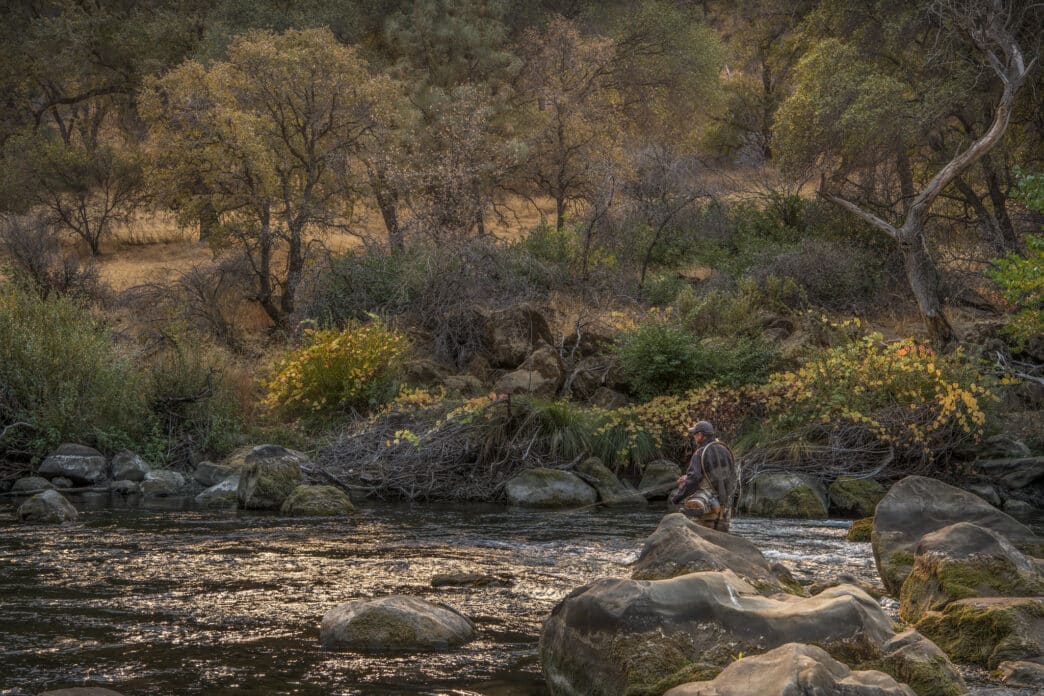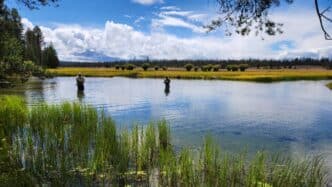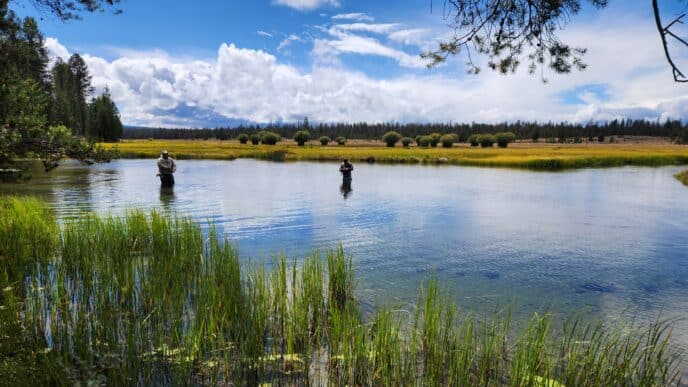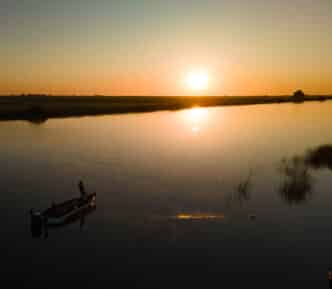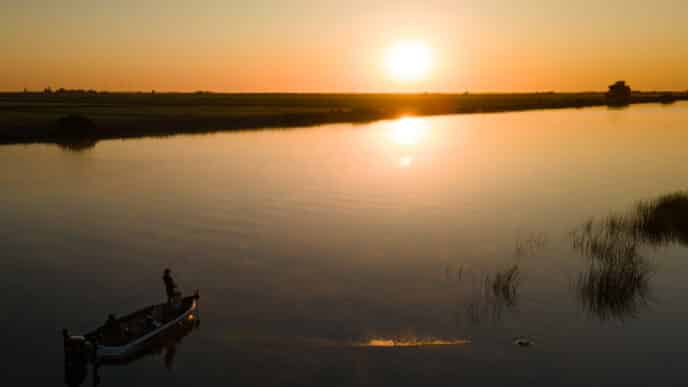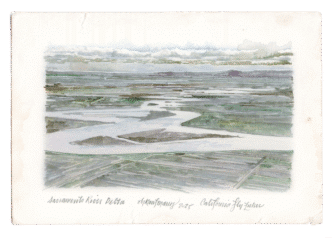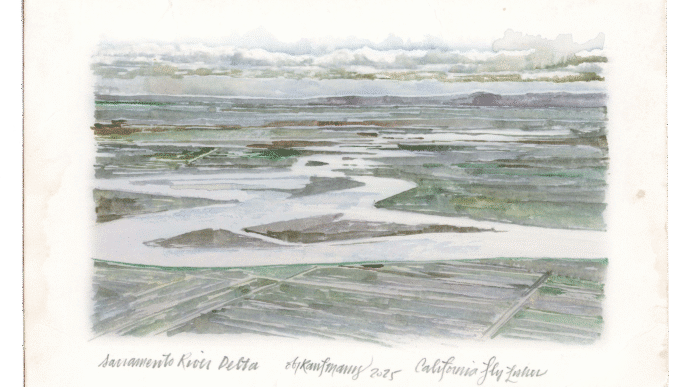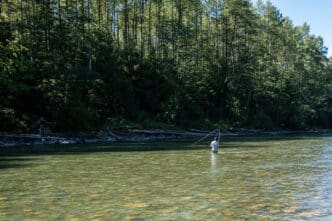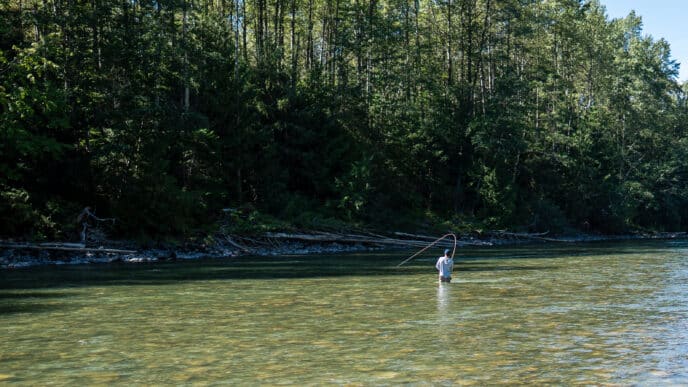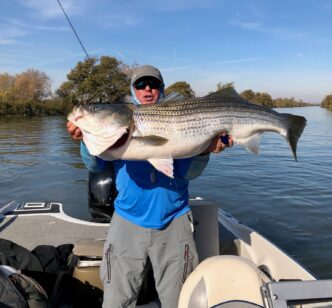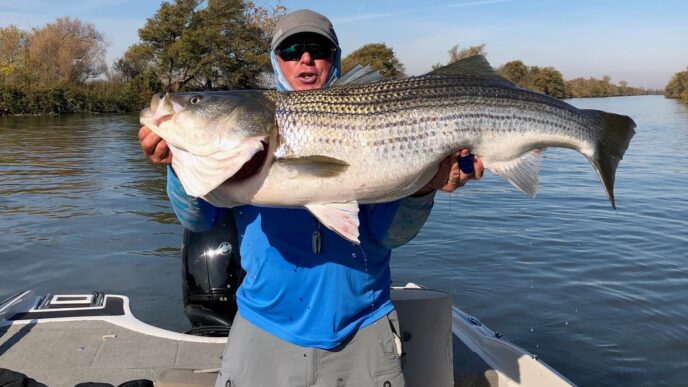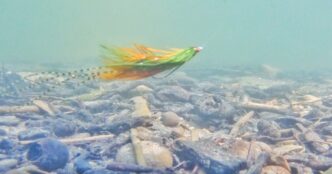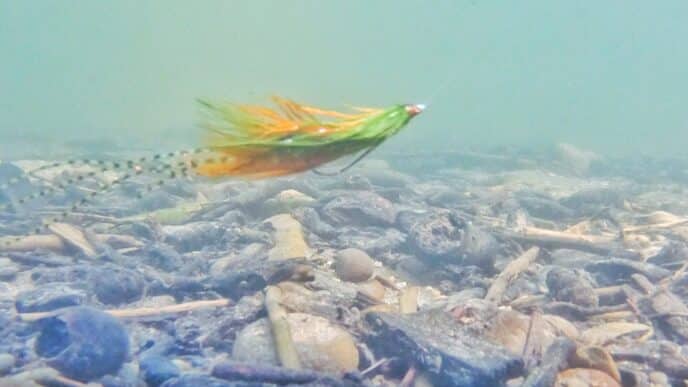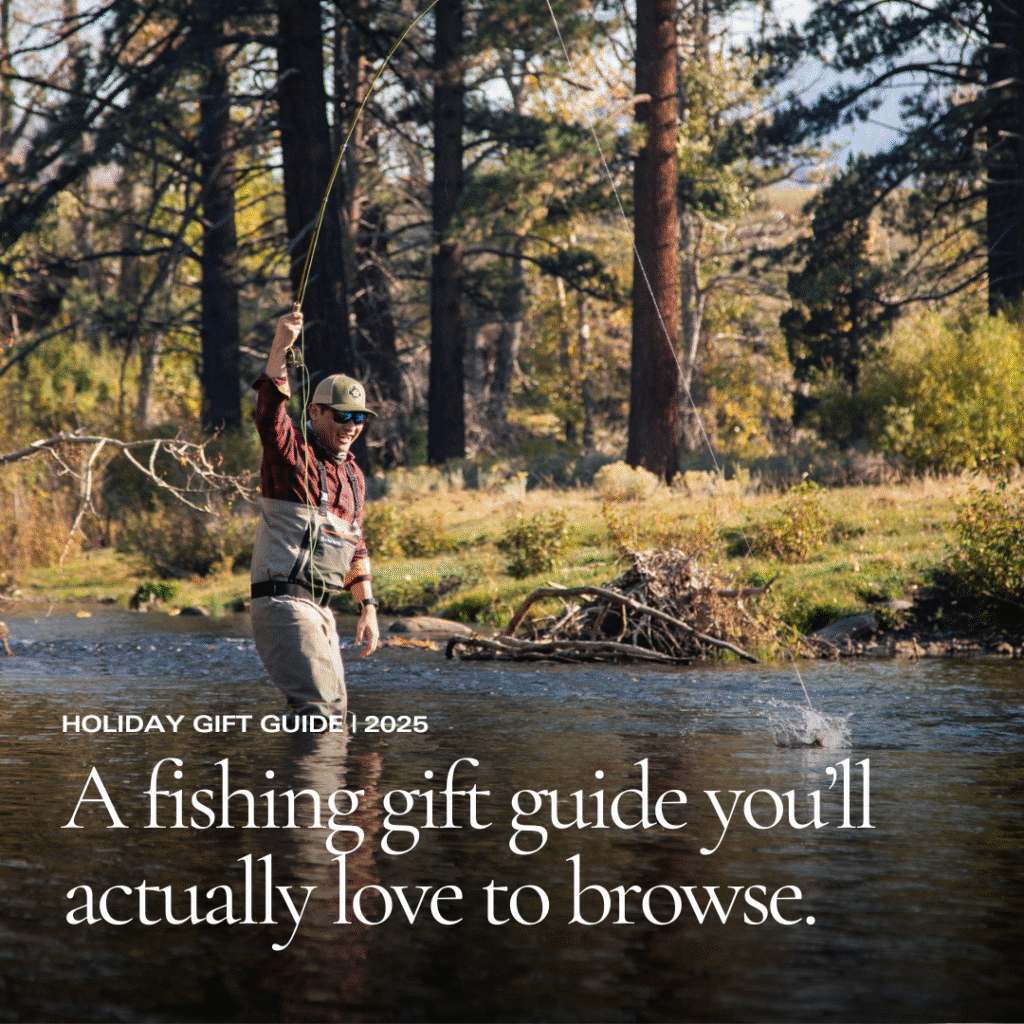Folklore surrounds it. Famous singers have sung about it, writers have put pen to paper over it, and anglers have long flocked to it.
It even has its own online forum, and everyone who fishes there either leaves in frustration or with glory. This isn’t Hot Creek, Fall River, or the Pit—it’s not even the Lower Sacramento. This is a small tailwater fishery, named by Spaniards centuries ago as Arroyo de los Putos, also known as Putah Creek.
Just west of Winters, California, nestled in the scenic foothills, this creek has inspired both song and story. John Fogerty of Creedence Clearwater Revival vacationed here as a young boy and later revealed that his hit “Green River” was about Putah Creek, where, as he wrote, “barefoot girls dancin’ in the moonlight” really did exist.
FROM MONTICELLO TO TAILWATER
The creek was forever changed in 1957 with the construction of Monticello Dam by the U.S. Bureau of Reclamation. The dam flooded the turn-of-the-century community of Monticello, forming Lake Berryessa and transforming this once seasonal stream into a tailwater with continuous cold-water flows. Today, the tailwater runs about 8.1 miles downstream into Lake Solano, where much of its water is diverted for Solano County use.
For years, the California Department of Fish and Wildlife (CDFW) stocked rainbow and brown trout here. But a lawsuit brought a few decades ago by the Center for Biological Diversity halted the practice of planting hatchery with wild fish, allowing wild fish to take over. Now, Putah supports a thriving population of naturally reproducing trout—some pan-sized, others large trophies. The creek is officially designated as part of CDFW’s Heritage and Wild Trout Program.
A FLY FISHER’S DREAM
Putah Creek flows through runs, riffles, and moss-covered boulders, blending the feel of both freestone and spring creek— classic water, a fly fisher’s dream. Wild fish thrive here, and the formidable trout have earned widespread admiration among many fly-fishing enthusiasts.
The average temperature hovers around 55 degrees Fahrenheit, with flows that allow the wild trout to flourish. In summer, flows often reach 1,000 cubic feet per second; in winter, they drop closer to 100 cfs. In 2025, however, flows have been lower than average, around 625 cfs.
Putah Creek boasts a large and diverse range of aquatic insects. It hosts caddisflies, mayflies, stoneflies, worms, and midges. Many folks fish midges exclusively. While this method yields fish year-round, an angler who carries a wider selection of flies will outperform those who only use midges. Tailwaters are always loaded with aquatic insects. You can travel along the creek and witness a mayfly hatch in one spot and a caddis hatch 500 yards downstream. Therefore, the angler must carry a variety of flies in their box. Don’t forget about streamers and egg patterns. Sculpins, small rainbow fry, terrestrials, crayfish patterns, and various eggs all attract fish at Putah.
One of my best days on Putah came a couple of years ago when I was high-sticking three flies through several riffles. I fished a mayfly and a midge, with a Barr’s Slumpbuster Olive Sculpin as my point fly. As I high-sticked the water, I let my leader swing up and across at the end of the drift. Nearly all of the two dozen fish I landed that day ate the Slumpbuster.
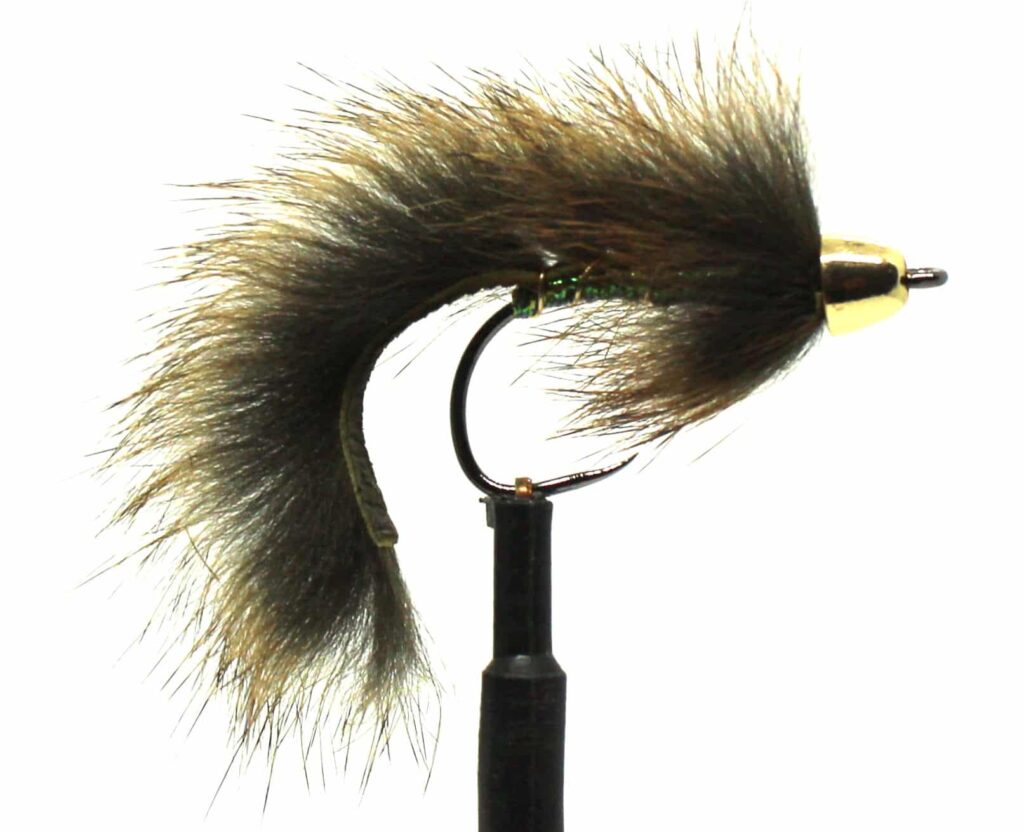
ACCESS TO WADING
Public access is one of Putah’s greatest assets. Yolo County maintains six parks along the creek, complete with trails, restrooms, and picnic tables, though some facilities are still under repair from the record 2017 floods, when flows surged past 9,000 cfs. Before heading out, check with Yolo County Parks for updates.
Flows are highest in summer, averaging between 600 and 1,000 cfs, fluctuating based on how much water is needed in the Solano Valley. During fall and winter, flows drop to around 65 to 200 cfs, when large storms create temporary spikes.
There is no bad time to fish the creek, especially if you’re a good and steady wader (see “The Art of Wading Well,” by Dick Galland in the Spring 2025 issue). The fall and winter flows are easier for most waders to wade through the creek. The rocks are still slick with moss, so you’ll need good boots and a sturdy wading staff.
Putah Creek is open to fishing all year long. However, fish spawn in the creek during the fall months, and many anglers voluntarily avoid fishing from November through February. During the pre-spawn months, large trout will be moving out of the deeper, colder runs to get to spawning areas in the creek. These fish are packing on the calories to get ready for the spawn, so it’s a great time to fish large flies such as soft-shell crayfish and sculpins. The crayfish are also spawning during this time, and small male crayfish are prime targets for big rainbows.
During the spawn itself, anglers should leave the larger fish undisturbed, targeting instead the smaller fish downstream that are looking to eat the aquatic insects and eggs being released from these spawning giants.
Post-spawn, the fish feed ravenously, making spring an excellent time to visit. Fish are trying to regain calories lost during winter, and springtime offers a wide variety of food, including baby crayfish, sculpins, midges, stones, and caddis flies. Everywhere in the creek, things are waking up, and fish are feeding on the hatching insects. I prefer springtime fishing and am always mindful of storms and large runoffs, especially if we’re fortunate enough to receive a lot of water.
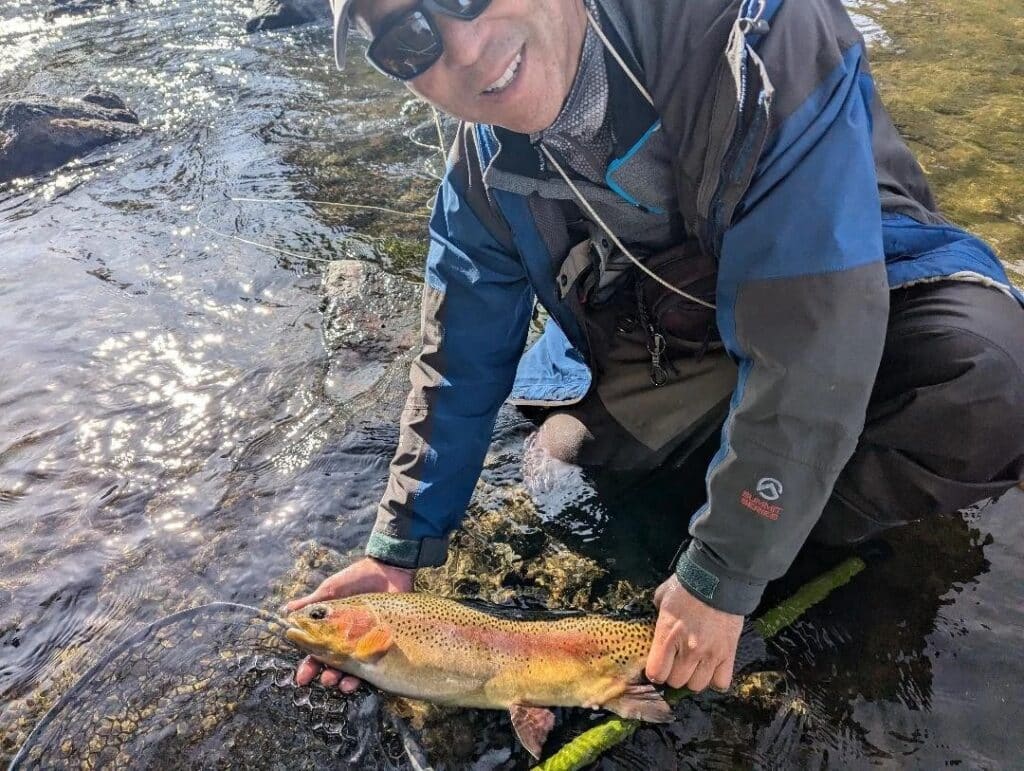
THE NUMBER 3 ACCESS AREA
Perhaps the most popular stretch is Yolo County’s Number 3 Access, about 600 yards long, stretching from the Guide’s Hole to the downstream fork at Island Riffle. With pocket water, deep runs, shaded channels, and cooler temps, it consistently holds fish. Easy trails and multiple water access points make it a favorite, and it is usually where I direct people to fish.
In this area, I like to wade and get close to the spots where I know fish tend to hold, using a high stick or Euro rig to reach all the nooks and crannies. Instead of adding weight, I adjust depth by raising or lowering my rod tip. I also like to give the fish a “buffet” of flies to choose from. I almost always fish three flies—from midges to sculpins—and only change when I spot a hatch or anticipate one about to happen. Confidence is key; the more you fish, the more faith you’ll have in your flies and your approach.
For rigging, I favor the Rio Euro leader; it works great. First, I tie on my tippet from the tippet ring, and then I use a dropper method to tie on my flies. I prefer to fish flies off the central leader at 90-degree angles.
FLY SELECTION
I pick my flies based on light and conditions. On overcast days, I fish darker flies like a black WD40. On bright days, I go lighter, perhaps a gray WD40. Anticipated hatches also guide selection—caddis on warm afternoons, mayflies when cooler. The lightest of all the flies is my first fly, and the heaviest is the point or terminal fly. I’ve been fishing my favorite flies on Putah Creek for years, decades in some accounts. They still work, and I still fish them. On the list are:
- Midges: Jigged midges (black or red, #18–20)
- Mayflies: Lance’s X-May Perdigon (light or brown, #18–20); Hogan’s S&M (olive or brown, #16–18); Doug’s Peaches & Cream (#16–18)
- Caddis: Thurman’s Jigged Bird’s Nest Peaches & Cream (#18); Fox’s Micro Poopah (green, #16)
- General: WD40 (black or gray, #18–22)
- Point flies/streamers: Barr’s Slumpbuster (olive, #8); Mercer’s Poxyback Crayfish (#8)
My Putah Creek box is packed with many flies so that I can match the hatch quickly. Remember, folks, Putah Creek is a tailwater fishery, and multiple hatches can occur simultaneously. Adaptability and observation separate the good days from the great ones.



